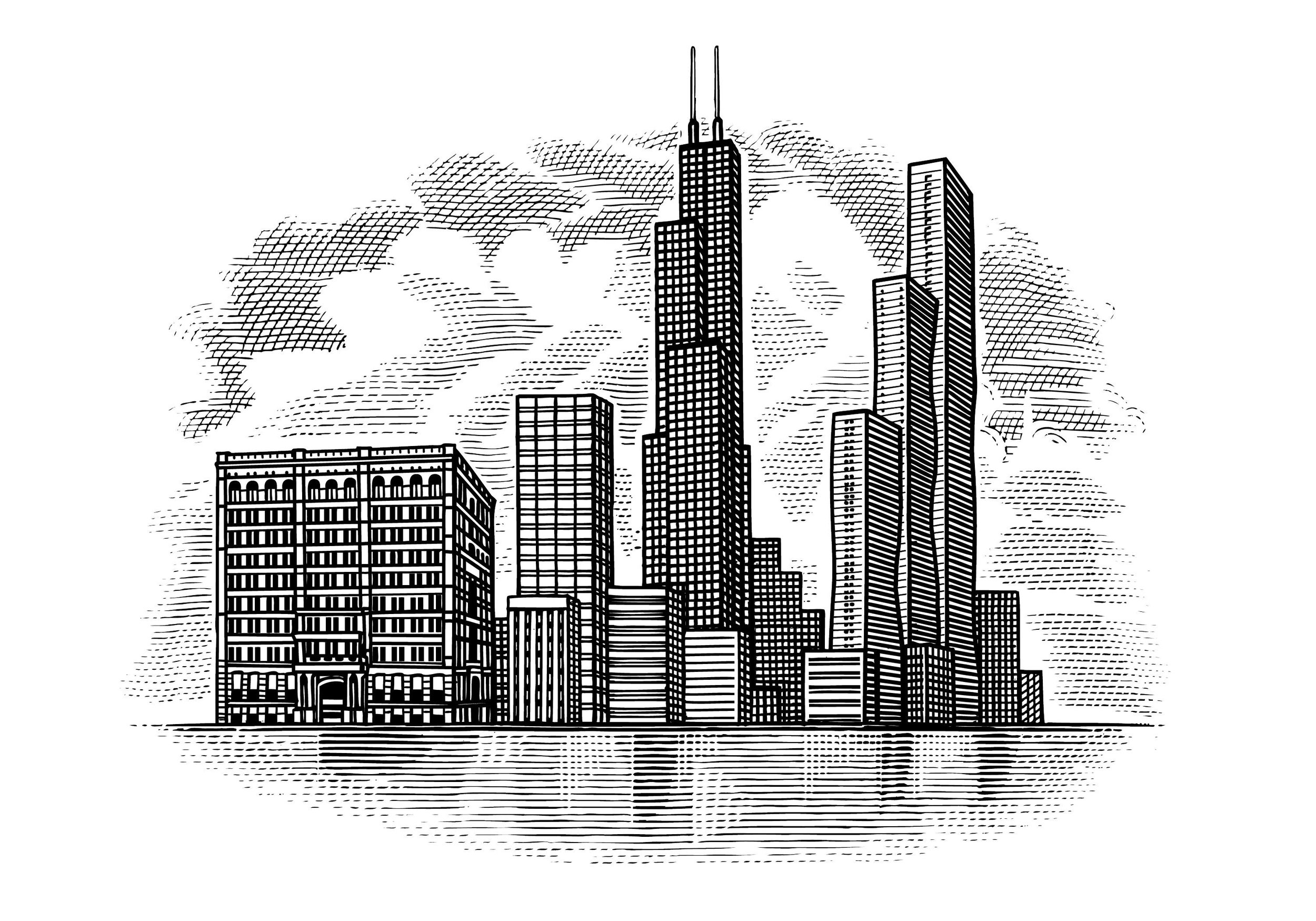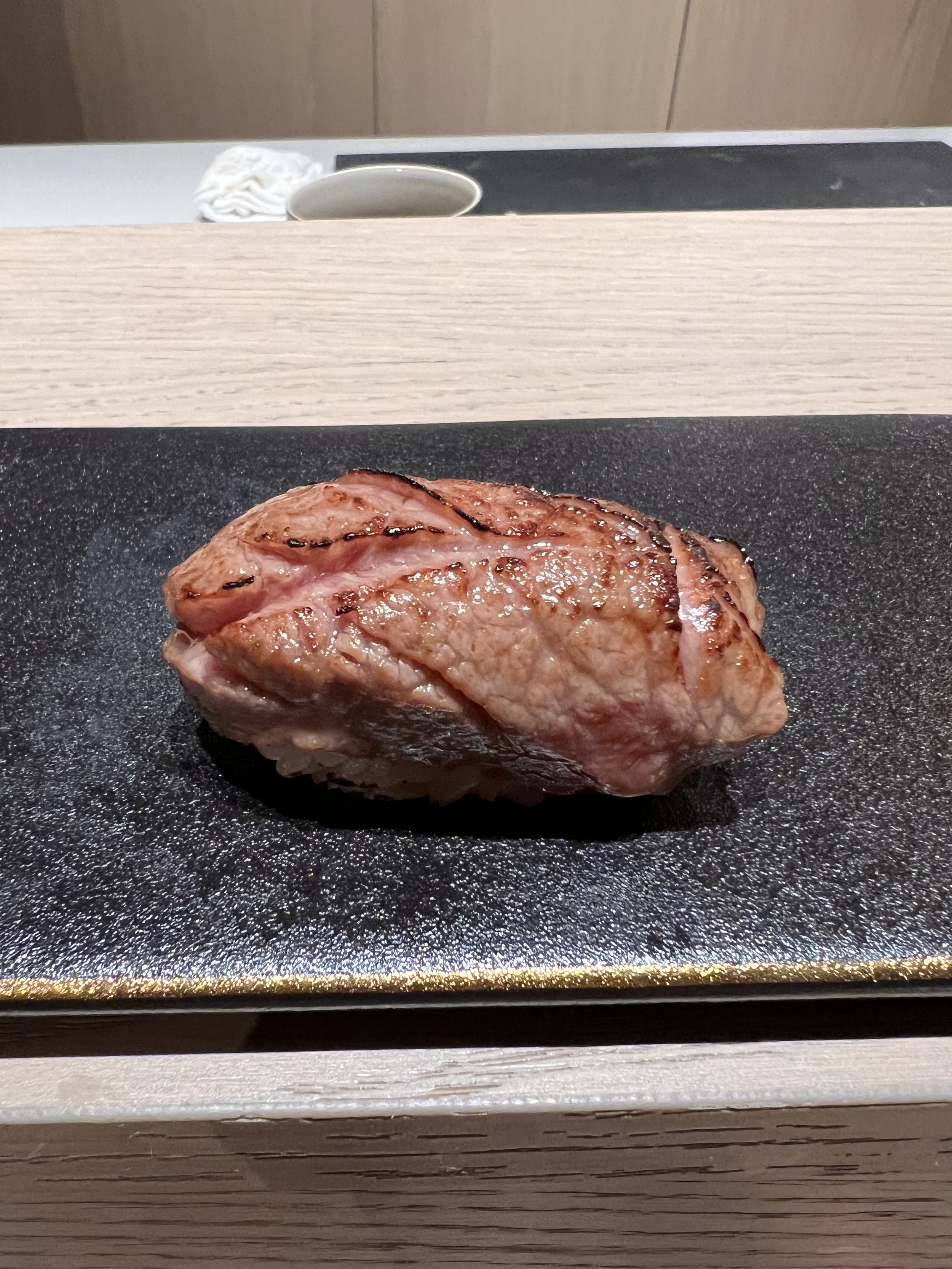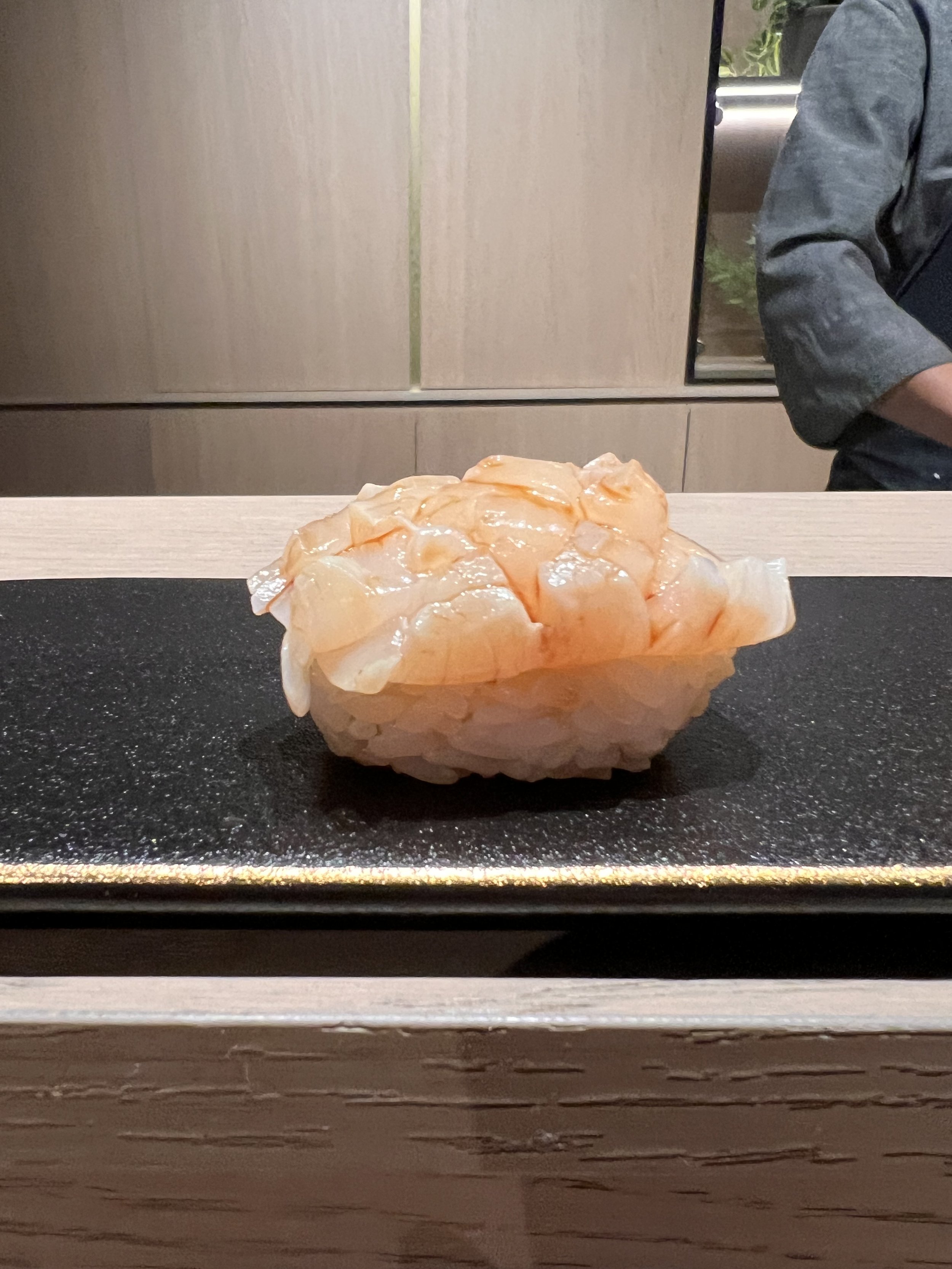Review: Kyoten Next Door Offers More Than Omakase
Otto Phan
Estimated reading time: 5 minutes (1061 words)
By the time we left Kyōten Next Door, my friends and I seriously thought chef-owner Otto Phan would join us for post-dinner drinks at a nearby pub. After two and a half hours of dining, drinking, and bantering with Phan and itamae-san Jorge✽, the possibility didn’t seem that remote. The warmth of the food and the quality of conversation left us thoroughly taken by the entire experience, and Phan and Jorge seemed to be into it as well.
But no meal starts at the end, so allow me to rewind.
We had an 8:00 seating for the 16-course omakase experience at Kyōten Next Door, Phan’s affordable follow up to Kyōten, next door. “Experience” is an apt word for what transpired: 16 pieces of excellent fish wrapped around special sushi rice and paired with a conversation I have had at few other restaurants around Chicago.
I’ll get to the food, but I’ll start with the conversation. Initially, Jorge would engage us (not just my friends, but also the other three individuals who showed up on time for their reservations), at first asking about our days and then announcing with authority every piece that he was producing.
By around the sixth course or so, something shifted and the conversation became much more personal. Through the course of the meal, Jorge told us that he started out his career as a valet in the Gold Coast, then worked as a barback, and eventually got a kitchen job at the Chicago Cubs Bar & Grill at O’Hare, where the knives were physically tethered to the wall to mitigate the obvious terrorism threat.
He told us that he was on the opening team at Nobu Chicago, where he worked 60 hour weeks and got to assist other Nobu Hotels when they opened, but that the Chicago location was shoddily built. He also revealed that he never attended culinary school and that his own home cooking was mediocre, but that something about sushi clicked for him.
All of this conversation happened as he hand crafted some of the best omakase in the city, possibly the country, and revealed an openness for biographical details and a willingness to engage with customers that I don’t think I’ve seen before.
The meal started with some approachable bites like salmon and hamachi; the halfway dish was torched A5 wagyu, which added a nice beefy compliment to everything else. Every piece was dabbed with real wasabi (freshly ground in front of us), crafted onto a ball of rice, shaped by Jorge, and brushed with soy sauce before being served on the counter. Chopsticks were provided but eating with your fingers was recommended.
The bites were remarkably consistent and fresh; the fish and rice were neither too cold nor too warm, and each piece was scored perfectly. But the wasabi, while excellent, wore me down by the end of the meal, and everything would have been served better by dialing it back a little.
For drinks, we provided our own initial bottle of wine because the corkage fee is an extremely reasonable $40. When that bottle ran out, we ordered a $46 bottle of off-dry riesling from Kyōten Next Door’s tight drink menu. And contrary to — or in response to — John Kessler’s review noting that the beverage menu was expensive, on our visit, most bottles sat in the $40-$60 range and only one outpriced our BYO bottle of $130.
Around the halfway mark, Otto Phan himself emerged and made his presence known behind the counter. Naturally, the conversation shifted to him and his experiences.
I asked if he missed Austin (no), whether he thinks sushi/omakase hits differently in the winter (no), what he did before sushi (worked at a Mexican restaurant making guacamole), and whether he thinks Kyōten deserves Michelin recognition.
For those who have followed Phan and Kyōten since before Day 1, the Michelin Question has been the elephant in the room the whole time. When he moved here, he announced with bombast that he was gunning for the stars, and when Michelin failed to deliver, it was certainly viewed as a snub or perhaps punishment for young hubris.
When I asked my question this time, Phan gave a similar re-worked response that’s been reported elsewhere (I did not record these conversations so I will not quote directly). In brief, he said that he’s older and more mature now and doesn’t need Michelin to recognize what he’s doing because he knows the product is exceptional.
I’m not quite sure I buy it. Kyōten clearly deserves to be starred, and I think Phan would appreciate it if that happened. But what his answer revealed, at least, was a contentment of the way things are and a recognition that it might not change.
We moved on. I asked why he wanted to open Kyōten Next Door, and he said that the “other place” is expensive and that with the new restaurant he can actually be more creative by showcasing traditional omakase that maintains his extremely high standards.
The rest of the meal went quickly, highlighted by the sardines (Iwashi) and scallops. Every piece was multidimensional, either being smoked (shima aji), fatty (hamachi), torched (gindara), or some other combination of texture, cut, cure, and preparation. The sardines, for example, take two hours to prepare for every service. Dessert consisted of two pieces of tamago infused with maple syrup, a personal touch by Phan.
At its heart, Kyōten Next Door is dinner and a show. Other restaurants have chef’s tables that allow you to peer into the kitchen, but only an omakase restaurant allows you to banter with the chef for two and a half hours. And at this restaurant in particular, the owner is ready and willing to get deep into conversation when he’s otherwise just there to observe. If this angle is pursued, as it was at my visit, Kyōten Next Door is one of the most unique and best restaurants in the city. The omakase is worth every penny, and then some. Yet it is traditional almost to a fault; “flair” is not in the vocabulary here.
Ultimately, Phan did not join us for drinks afterwards, and we were left to replay the experience among ourselves.
✽Jorge has been mentioned by name in other publications, but only mononymously as Jorge, which I find amusing.
Click to expand. Left to right, top to bottom: salmon, masu, madai, shima aji, hamachi, akami, toro, wagyu, scallop, aji, lobster (substituted for uni), gindara, futomaki, tamago. Not pictured: temaki
Details
Stars: Three 1/2 (out of four)
Price: $$$ (out of four)
Style: Japanese, traditional, omakase
Atmosphere: Sleek, intimate, focused, Japandi
Location:
Kyōten Next Door
2507 W Armitage
Chicago, IL 60647
Website:
https://Kyōtenchicago.com/Kyōten-next-door-now-open
Star guide: one - poor, not worth time or money; two - mediocre, worth a visit on occasion; three - very good yet with issues; four - exceptional quality
Price guide: $ - cheap; $$ - affordable; $$$ - special occasion; $$$$ - rare opportunity
















